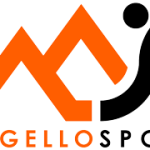“HVO Aurora demonstrates the immediate potential to cut well-to-wheel emissions by implementing solutions compatible with the vehicles already in use by our clients,” stated Luca Marengo, Head of Product and Innovation at Stellantis Pro One. “Stellantis Pro One is dedicated to providing practical and scalable solutions that assist commercial clients in lowering emissions across the entire lifecycle as of now. This initiative marks a tangible step towards creating a cleaner future for mobility in Europe.”
Today, Stellantis launched a month-long tour across European roads in collaboration with SP3H, a French company specializing in smart sensors for low-carbon fuels. Two Stellantis vans (a Citroën Berlingo and a Fiat Professional Ducato), equipped with SP3H’s connected FluidBox Micro sensor, have embarked on a journey through Europe to gather data on real-world usage. Their mission is clear: to prove that clean and traceable fuels can be utilized in existing vehicles—without changes to fleets or infrastructure—offering a practical and complementary solution to reduce CO2 emissions. Throughout their travels across various European countries, SP3H’s FluidBOX platform will relay real-time data confirming the usage of HVO while estimating the well-to-wheel CO2 savings. This demonstration underscores that there isn’t a one-size-fits-all solution for cleaner mobility. Thanks to onboard sensors that certify the use of low-carbon fuels, HVO Aurora provides an immediate, reliable, and inclusive complementary option for contributing to CO2 emission reduction, especially aimed at LCV fleets. All passenger cars and light commercial vehicles sold by Stellantis are fully compatible with HVO diesel fuel (EN15940 standard for paraffinic diesel fuels). Furthermore, many Euro 5 and Euro 6 diesel vehicles currently on the roads can also utilize this fuel without modification.
– photo: Stellantis press office –













